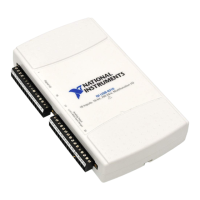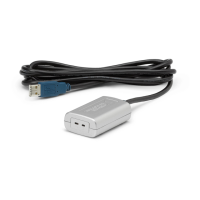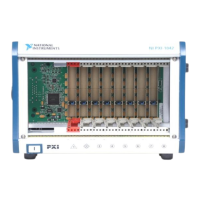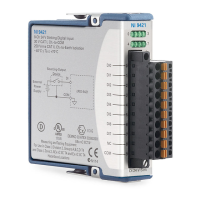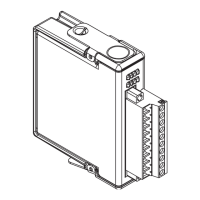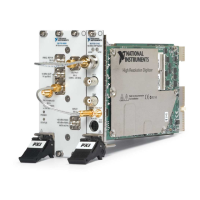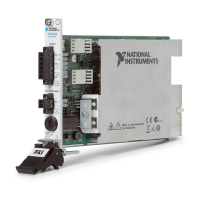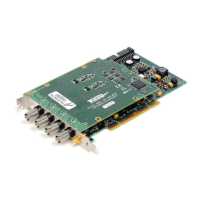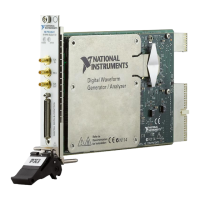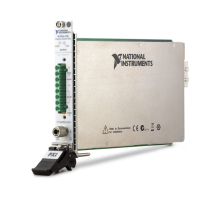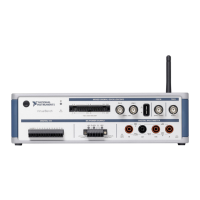Chapter 4 Analog Input
© National Instruments Corporation 4-7 NI USB-621x User Manual
full-scale range. For a 16-bit device to settle within 0.0015%
(15 ppm or 1 LSB) of the ±200 mV full-scale range on channel 1,
the input circuitry must settle to within 0.000031% (0.31 ppm or
1/50 LSB) of the ±10 V range. Some devices can take many
microseconds for the circuitry to settle this much.
To avoid this effect, you should arrange your channel scanning
order so that transitions from large to small input ranges are
infrequent.
In general, you do not need this extra settling time when the
NI-PGIA is switching from a small input range to a larger input
range.
–Insert Grounded Channel between Signal Channels—Another
technique to improve settling time is to connect an input channel
to ground. Then insert this channel in the scan list between two of
your signal channels. The input range of the grounded channel
should match the input range of the signal after the grounded
channel in the scan list.
Consider again the example above where a 4 V signal is connected
to channel 0 and a 1 mV signal is connected to channel 1. Suppose
the input range for channel 0 is –10 V to 10 V and the input range
of channel 1 is –200 mV to 200 mV.
You can connect channel 2 to AI GND (or you can use the internal
ground signal; refer to Internal Channels in the NI-DAQmx Help).
Set the input range of channel 2 to –200 mV to 200 mV to match
channel 1. Then scan channels in the order: 0, 2, 1.
Inserting a grounded channel between signal channels improves
settling time beca
use the NI-PGIA adjusts to the
new input range
setting faster when the input is grounded.
– Minimize Voltage Step between Adjacent Channels—When
scanning between channels that have the same input range, the
settling time increases with the voltage step between the channels.
If you know the expected input range of your signals, you can
group signals with similar expected ranges together in your scan
list.
For example, suppose all channels in a system use a –5 to 5 V
input range. The signals on channels 0, 2, and 4 vary between
4.3 V and 5 V. The signals on channels 1, 3, and 5 vary between
–4 V and 0 V. Scanning channels in the order 0, 2, 4, 1, 3, 5
produces more accurate results than scanning channels in the
order 0, 1, 2, 3, 4, 5.
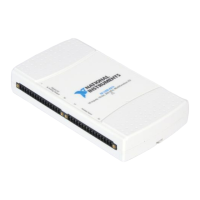
